Before you can replace a heating element on your oven, you must first learn how to remove it. This article will cover different types of heating elements, including Nichrome-coated and Electric ovens. If you are unsure about what heating element to choose, consult a professional for guidance. You may want to also consider purchasing a new oven if the current one has become worn out. In addition to understanding how to replace an oven heating element, you should also know about other types of heating elements, including those made of steel.
Electric ovens
Unlike other appliances, electric ovens use a heating element to produce the heat that is necessary for baking and broiling. These elements are simple to replace, and they produce heat as an electric current passes through them. Problems with these ovens are usually easily fixed by replacing the heating element. Here are some tips to keep in mind when changing this oven component. Read on to learn more. If you notice any signs of malfunctioning, here's what you should do.
Before replacing an existing heating element in an electric oven, check the electrical outlet. Make sure the oven has a power source, as the power cord is needed for the element. Generally, the outlet is located on the lower part of Heating element Factory the oven. Make sure to check the outlet of the heating element and make sure that it's plugged into the wall. If you don't know where the power switch is located, you can use an electrical tester to check its location.
Once you've located the power source, unplug the oven from its wall outlet. You need to unplug the appliance before attempting to replace the heating element. The electrical outlet should be a double-pole breaker. When changing the element, you should use a non-contact voltage tester to test for electrical voltage. Alternatively, you can unplug the oven completely and test the wires.
Nichrome heating elements
When choosing an oven heater element, make sure you're buying a Nichrome one. These wires are a perfect choice for this type of heating element. Their resistance is 100 times greater than copper wire and one fourth of the resistance of graphite. As a result, they are a good choice for moderate temperatures with a high humidity content. You'll find that a Nichrome element will last you a long time and will be extremely durable.
Nichrome is a nonmagnetic alloy of nickel and chromium that's widely used for electrical appliances. The metal is wound in wire coils to have a certain electrical resistance. When a current passes through the wires, the metal is heated. The higher the resistance, the faster the heat is developed. The best way to tell if a Nichrome element is the right one is to read its specifications.
Another option for an oven heater is a ceramic heating element. These are often called PTC ceramic because they act as their own thermostat. Unlike electrical heating elements made of nichrome, ceramics are more durable and allow electricity to pass through when cool. Ceramics also allow electricity to pass through when hot and resist it when cold. Because of this feature, they are often used in automotive applications, such as rear window defrosters.
Nichrome-coated elements
A Nichrome-coated heating element for oven heater provides excellent efficiency and durability. Nichrome wire is a highly durable and long-lasting material used in electrical heating elements. Its melting point is more than one thousand times higher than the melting point of copper, and it resists flows of charges better than other metals. The result is a much faster heat development. Nichrome-coated elements are also available for other home appliances.
The material used to create these elements is a combination of ceramic and metallic alloys. A Nichrome-coated element is a durable and lightweight material. Nichrome-coated elements are used in ovens, dishwashers, blow dryers, and other kitchen appliances. Moreover, NiCr elements are extremely flexible, retaining their shape and reducing the risk of breakage.
An oven heater that uses a Nichrome-coated heating element has a lower risk of overheating. The alloy is composed of approximately 80 percent nickel and 20 percent chromium. This alloy is non-magnetic and does not oxidize. When heated, it forms an adherent layer of chromium oxide that prevents it from cracking or breaking.




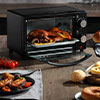
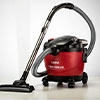
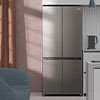
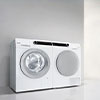
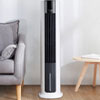
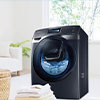


 English
English




